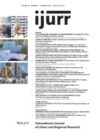This article examines the regulatory frameworks and practices that deter bicycling as a mode of protest. Through an in‐depth case study of New York City’s legal, policing and enforcement practices towards bicyclists in the wake of the 2004 Republican National Convention, I explore the assumptions underpinning the regulation of bicycling as a mode of protest. In addition to analyzing these regulatory and legal frameworks to highlight how they suppress bicycling as protest, this case study illustrates how police practices work in tandem with the law to erode the potential for alternative mobilities and citizenships to flourish. Through ‘command and control’ policing and regulatory tactics, the New York Police Department is deterring cyclists from participating in group bike rides and is carrying out low‐level harassment of ‘ordinary’ cyclists. The experience of New York City’s cyclists shows that in addition to changes to infrastructure and transportation policies, changes to the rules, regulations and practices governing protest will be necessary for alternative mobilities to fully flourish.
Details
Written by:
SUSAN G. BLICKSTEIN
Digital Object Identifier (DOI)
10.1111/j.1468-2427.2010.00914.x
About DOI
Read full article as PDF
Read full article as HTML
See the references for this article
